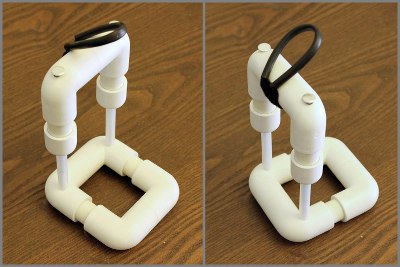open cell spray foam on roof deck
Allison and David, What would you advise when a HVAC system does not exist? This should not be a concern when applying foam to the underside of a roof deck. Closed cell spray foam should be 4- to 5- inches on the ceiling and 2- to 3-inches in the walls. So far no problems, but......? To make matter's worse you had to know where to look for it because this guy collects antique furniture and loves his new home to look and feel old. It's more the water inputs of the home that need to be managed. Spray Foam Myth: Insulating with spray foam insulation at the roof line will cause moisture problems with the roof sheathing. So far minimal exterior air intrusions and defects, other than the foam folks tramping on metal ducts. The people saying these controls are band-aids outright are in climates where these attics are fine if they are sealed properly. It allows air to flow through it. It's a smoke detector mounted in the return duct which has both an audible alarm and a switch to turn off the HVAC system if smoke is detected. Richard, You're attacks are personal but you claim mine are. It is (or should be) standard practice in cold climates to have a class II vapor retarder on the warm side of air or vapor permeable insulation, regardless of attic configuration. Another 21% is oxygen, O2, with a molecular weight of 32. Do you see the overlap thats how much extra foam you are using. I don't see that term anywhere in the codes and never have. In the first paper, Roof and Attic Design Guidelines for New and Retrofit Construction of Homes in Hot and Cold Climates, the authors used HERS BESTEST and AtticSim. Be sure to accommodate for liquid water under the sheet if the crawlspace is ever wet, and don't forget to complete the rest of the code requirements dictated in section 408.3 of the IRC. Ah! The other benefit is that it has cut the heat gain to their attic considerably. It's not coming from above the roof and it's not some new moisture source resulting from the spray foam. This is a great question. If you haven't read it yet, I recommend Lstiburek's latest article, Cool Hand Luke Meets Attics. In BPI training they use an example where you have a 10'x10' drywall wall which is completely sealed and it only allows 1 pint of moisture to pass through this wall. You did a good job explaining the issues I've dealt with over the past 12 years explaining it to customers. In Climate Zones 1, 2, 3, and 4 the use of open-cell spray foam, with their vapor permeable nature, will allow the drying of roof sheathing and framing as diffusion allows moisture to pass through the spray foam out of sheathing and structural elements. But, if you take the same cold soda and put it in a styrofoam cup, it won't condense on the outside. At a thickness of 1.5â, many closed cell products can provide a moisture barrier to reject bulk water, and its these vapor permeability characteristics that make closed cell products perfe⦠Especially when the sun gets on it. I appreciate the comments and value the information here. I disagree Jim. A sealed attic is similar to a sealed crawlspace in a couple of ways: It is a space that is not frequently accessed by the home owner. I know of some companies that sell dehumidifiers on every job as a matter of course. There are typically no s⦠When you add in the other 1% of gases, the average molecular weight of a volume of dry air is about 29. The solution referred to above is a device that is required in the Mechanical Code for commercial buildings. Spray foam contracts and pulls away from framing. But to my point (and with all due respect to Skye), mechanical dehumidification should not be the baseline assumption when designing/building homes with encapsulated attics (or crawls). We started recommending and seeing sealed attics in our projects about 8 yrs. Wood only needs low levels and has mainly two spores, some theory claim none for ‘dry rot’. In the future this is the only way I will install a roof over spray foam, regardless of the type used. Hydraulic pressure or hydrostatic pressure as you call it, is when you have liquid water build up and contained. The unvented attic is indirectly conditioned space since heat and moisture transfer occurs through the top floor ceiling, particularly if the ceiling is not airtight. Similarly, not everyone can afford to spray nearly 10 in. This will dehumidify the air while producing much needed hot water. The low expansion rate doesn’t work in your favor for the roof deck or flat, because it’s not going to fill the cavity the way you want without using more material and increasing the cost. We have lot's of experience with sealed attics. It just sets people off because of the fire code issues and it's unnecessary in our experience. That's not the same as saying that mechanical systems should never be part of the solution in homes with defective envelopes. With the heat/ac rigid metal duct work exposed I had a company finish taking out all the batt insulation and belly paper and cover the under floor and all the duct work with open cell foam. So far I found two culprits of high humidity generators in a home thinking outside the box. Just be aware that the 330 ft. signal reach is a fantasy. The building industry has another problem on their hands with open cell foam foam. Closed cell spray foam is a great material, but it isn’t always going to be a great fit for the attic. When closed cell is used, sometimes, you still have openings at the soffits which makes this insulation much less valid. David, believe me when I say, just like our sealed crawls, this is a problem that requires a mechanical solution in our area even in new construction jobs with very tight envelopes - including the attics. This business I keep hearing about returns in the attics though, is madness! It also poses much less risk of causing a fire by using open cell because if you try to spray closed cell in this application, you will commonly get a couple of locations where you're over the 3" thickness which is the maximum thickness to be applied in one pass without the risk of causing excessive exothermal heat reaction and possibly starting a fire. open cell spray foam insulation | Or all of the above. Moisture from indoors can diffuse through the foam and find the cold roof sheathing, where it accumulates and eventually rots the roof. Randy, Can you explain on what you've found with the rotted roofs? There is no compelling evidence one way or the other. I've just determined that on sunny days we have extremely high temperatures and humidity in the attic--90 degrees and 95% humidity. Again, it is a modulating/inverter system and I should have said percentage of system airflow capacity, apologies. Now the idea of adding a solid insulation on the underside is good in principle, but only if that insulation is ran all the way out into the eves. The material composition varies so much it has to be stated in the MSDS to a third party test and ASTM, RTCA, or ISO. In most cases, we recommend the open cell spray foam on the attic flat and roof deck, but there are instances where the closed cell is the better option. One product that I've used is a Heat Pump Water Heater. The problem with that solution, though, is that it violates the building code for an attic with exposed spray foam insulation. Sorry David the question did not come out right... I-Phone message I'll repeat what I meant to ask.. I will never do it again. I know that some people are still saying that closed cell insulation works fine, however we have one install over closed cell that is starting to have the same signs. In my opinion, the residential code (IRC) you refer to has not caught up to the vast use and troubles of SPF. Don't just waste conditioned air at the problem. I've insulated many, many homes with open cell insulation over the past 11 years and I have yet to see one which was wet, damp or damaged due to the open cell insulation and this is in Upstate NY! I've become involved with a failing roof that is approximately seven years old. Mechanical systems can absolutely be implicated in sealed attic failures. This helps ensure that if water does seep beneath your shingles, it will not sit between the spray foam and roof, creating rot. As promised in the title of this section, I'm going to condense this issue, so to speak, down to its essence. The builder closes up a house full of humid air, fires up the AC, and the rest of the house gets cool while the ducts in the attic sweat. The photo above shows the house where they did the year-long study. In an attic configuration, if same insulation depth is applied to the inner sheathing, this design also reduces thermal bridging (i.e., from additional thickness of rafter overspray). Now generically speaking, we usually recommend open cell spray foam to be 6- to 10-inches on a roof deck or ceiling and 3-inches in the walls. @Randy, interestingly, I'm currently involved in a project in sw Virgina with a roof design similar to the one you describe except I specified a 1.5" gap and rigid foam blocking (XPS) instead of of plywood. Allison posted a blog article some time back showing an installation of a dehumidifier in an attic space. Stopping air versus water vapor are two different things. The underpinning is not air tight which is good and bad. We've used this regularly and found it to be better than closed cell because you can fill in some of the gaps under the trailer easier, than using closed cell. They will need the manufacturers contact information and the material safety data sheets to dissect your IAQ chemicals. It's the wood decking that stores the moisture, though. Versi-Foam ® open cell foam kits have a density of approximately 0.75 pounds per cubic foot. That's with only half inch whole! So, you need to control the moisture at the source and then you don't have to worry about it. Poor air exchange and exhaust ventilation may also be the culprit however, it's unlikely ventilation unless the family takes very long hot showers, cook a lot of seafood or boil pounds of spaghetti a week or have many occupants and lets no forget about the high humidity in the southern states. Many SPFI companies do not advise the customer properly or warn them of known consequences. This is another common misconception associated with closed cell spray foam. There was no ventilation designed or installed in the attic. So, at this point, I turn it over to the new guys. Yes, some homes with open-cell spray foam have had moisture problems. What itâs Made of, How it Works, & More. And you're not alone. Also, I was thinking to remove the walls and spray the foam between the studs. The color change can be related to UV exposure. As a result, in IECC climate zones 5 and higher, building codes require the use of a vapor retarder if you install open-cell spray foam. Temporary excursions above 60% RH aren't an issue. I even provide links to several inexpensive desktop monitoring stations that come with remote temp/RH sensors. Your seriously mistaken. I love mock-ups. Make sure the installers get the attic sealed airtight. BTW, beware of relying on ERV as the primary exhaust for shower areas. Youâll find it used for ceilings, walls, and roofs. None. I have not heard of any evidence to support your theory. If a contractor needs to get into the attic and cut away the closed cell to fix the leak, it’s not pliable and cutting it can be very difficult because of its rigid composition. was exactly the point I was going to make. The next day, even more moisture is driven inward. It all comes down to that – which material is best for your home. Closed cell is appropriate for this scenario. RH isn't an issue for the roof in summer. They sued and the chemical company settled for the damages to the structure. The incidents related to rainwater leakage and condensation con⦠Open-cell spray foam has a low density, which makes it vapor permeable. You can see through all of this compiled information why open cell is usually recommended and why there are instances where closed cell makes the most sense. Up! He opens: In what is turning out to be an unfortunate turn of phrase, the terms “unventedattics” and “unvented roofs” have entered the lexicon. Problem is the percentage of system capacity that needs to run with a single zone demand. A more major re-work of that 5" raftered section,could be to install 2" of closed cell foam, on the roof deck, then 3" of open cell trimmed flush with the rafters, and a continuous layer of 2" rigid rock wool or unfaced EPS strapped in place with 1x4 furring through screwed to the rafters, with gypsum board mounted on the furring. Yes, if the roof leaks it will allow mass water to come through the insulation material but it will dry out slowly without harm. The home @2500 sq ft, boat load of glass, surrounded by water, bay and the ocean within 1 mi. Does anyone know if odor issues can be produced by humidity and temperature in an conditioned attic space? (OK, it is really, but my plan is to make it sound like it's not by giving you just what you need to know.) It's the same situation in a very similar part of the building assembly which should have been obvious without having to create a bunch of failing houses to identify. This is another case where you can't listen to advice from well meaning people around the country when you're working in the hot/humid climate (sorry David). So we started requiring some sort of humidity control. We found this because we were looking, which brings up the first and most important point I always make regarding sealed attics. He did essentially the same experiment you suggest but it was on one house, not two. These foam additives are fungi food and will grow under the materials rated moisture content (MC) and relative humidity. Not long ago, someone even told me that in Florida, roofing companies won't let their workers go up on roofs with open-cell spray foam because the roofs are so spongy, the guys fall right through. Deteriorated and rotted decking can be found all over the structure. Maybe you need to elaborate on your negative intentions and comments which lead readers to think the homeowner is the cause of their smelly foam? You do the best you can to mitigate moisture at the source and, when necessary, apply an appropriate mechanical remedy to get you where you need to be. The open cell foam did not bond to the sealer. Condensation is when a cold surface comes in contact with warm moist air. One possible failure mode is that open cell foam was used without a vapor retarder coating. Please reach out to me @ Richard.Beyer@patayastonedesign.com I would like to learn more about the problems you are experiencing. The way to do that would be to have a humidistat control a motorized damper for the attic supply. Plus if the roof line is now part of the envelope does that not affect the size of your HVAC equipment because you're adding considerable volume as part of the system? As a defensive measure, provide a supply to the attic. Many light commercial projects are Type V-B (wood frame) construction and these smoke detectors have been successfully used for years in buildings often very similar to houses. It can be a stand alone for the attic area or if the HVAC system is used for attic area combined with the whole house dehumid system tied in with the central HVAC system. If that doesn't keep the RH levels under 75% you can add a dehumidifier. hbspt.cta._relativeUrls=true;hbspt.cta.load(2621536, '830445d2-7349-491c-a2ec-b1be4d7b6405', {}); Amanda previously has worked as a breaking news and crime reporter, TV news producer, and editor in Flint and Detroit. closed cell spray foam insulation. The two papers were based on computer simulations. I, too, thought Martin's article was rather alarmist. I also recently noticed that on one of the vertical walls (not the rafters), the foam is discolored in several areas. The manufacturers we work with, as well as others in the industry, recommend open cell spray foam on the attic flat and roof deck because of its expansion rate and water permeability. of attic "floor". This is unintentional conditioning of the attic, and ironically the worse the ducts are sealed the better job of conditioning the attic the leaky duct system will do. The unfortunate part is the homeowner was subjected to major illnesses which they blame on the black mold which was found in the OC Foam. 1.) Water was found between the plies of modified and beneth the peel and stick underlayment below the tile which was secured with foam, thus having no fasteners penetrating the underlayment. Most all of the sheeting is going to have to be replaced. I would also try to reduce the moisture from coming into your structure by applying a special coating that penetrates 10" deep into the block and concrete and seals the moisture out at that point. We live in Southern Missouri. My best answer is based on economics if your house has room for the required R-value that you desire or is required by code spray open cell foam. RE: my last comment. Every house is different, so there are times that we step out of what we normally recommend to make sure we are giving the best product for the job. And that's as far down that path as I'm going. - it's not done right much of the time, with the seal around the perimeter of the attic not being truly sealed. It is a solid vapor barrier. Jim Coler posted an excellent overview of mechanical DH options in his June 29, 2014 comment. I too have heard the banter about roof failures caused by open-cell foam but in my dozen-plus years in the spray foam business I've seen exactly zero failures like the ones mentioned in the Miller article. If you build one area of the home as higher performance then you better look at the rest of the system! Thank you for your thoughts. Hope this helps, and let us know which one or ones of these you tried and what your results are! Seems to be a large misunderstanding of chemistry and Material Technology design here. In fact, the way Holladay reported the remarks of William Miller, the author who presented one of the papers, it sounds like he has no doubt: "The roof sheathing is humid when open-cell spray foam is used," is how Holladay quoted him. ( non-vented roof) #2 Spray 3 to 5" of closed cell foam onto the tuff-r surface leaving a 3-4" air space above the foam in a vented roof system. The foam was applied to the attic rafters and walls. Skye D.: Sounds like you've found a good solution that works in your area. In some homes and in some climates, it's going to be enough to nudge the humidity level down, but it's not going to work for everyone. A 3-in.-thick layer of open-cell spray foam has a ⦠When encapsulating attics and crawl spaces they need to be vented or degassed. See the photo above. Air transport (yeah it's "sealed" but of course there is still some leakage) and vapor diffusion. RELATED: What is Open Cell Spray Foam Insulation? Other things to keep in mind though is that if there is a leak, closed cell will hide it because it is water impermeable. It's OK to leave the foam exposed in an attic if you cover it with an ignition barrier. Please note: you must make sure that you meet the building codes with regard to 15 minute thermal barrier or ignition barrier if they apply. In an unvented attic scenario, to limit air leakage as well as any associated condensation at the roof line, a continuous air barrier is required. It's transported into the concrete or block with moisture and is considered for potable applications. John B.: I was wondering if I'd hear from you today. Now when you put a similar product on a roof deck, you will get condensation under it, especially in high temps. There is no required labeling or legislation for quantity of HFRs. You want spray foam in your attic because you know it’s the best option for comfort and energy, but what is the better fit – open cell or closed cell spray foam? Only after I spend many days showing them the problem do they then begin to understand it. I agree with Sky regarding monitoring. Our company has installed thousands of unvented roof assemblies with open cell foam with no issues. For this reason we now tell customers that we will NOT do their install if they use open cell insulation against their roof deck. What about using a separate dehumidifier in the attic space? There are two types of spray foam: open cell and closed cell. Not sure what a "blower door" is. There are many times where the demand for the A/C isn't there in the fall and spring, even with a modulating system and zoning. of closed cell foam on the entire perimeter wall of the crawl space and also on the rim joist to get a tight seal. I can't say that would be true but I have to say that I've never had a problem like has been described in this article in over 10 years of business and primarily using only open cell foam on the underside of roofs. I live in the northeast. ccSPF sticks to almost everything tenaciously, but really doesn't like sheet polyethylene. The damp foam can then transfer the moisture to rafters and decking materials, leading to rot or leakage. The moisture from above, they thought, comes from rain and dew on the shingles migrating inward and then being forced farther inward during the day by solar vapor drive. Sometimes, the number of people is excessive compared to the building size and that just creates more perspiration and respiration that needs to be dealt with. Servicing Michigan's Lower Peninsula & Greater Toledo, Best attic insulation | Temp can be set high with the dehumidifying call turning on the a/c up to 3 degrees below temp set point. We started requiring that these systems be installed in all of our projects as soon as we realized this similarity to sealed crawls. Hence the gag order. The comfort range defined by ASHRAE is up to 60% RH and buildings can easily tolerate temporary excursions into the high 60's. The 1/4" styrofoam cup is just enough to prevent condensation because it keeps the outside of the cup at about the same temperature as the outside air. If vapor drive is causing condensation on the underside of sheating, how does that fact fit in to their anaysis that open cell foam promotes and or is causing rot. Joe Lstiburek studied the possibility of moisture diffusing through the shingles on a house in Houston and found it wasn't the source. Living, kitchen, laundry area are hardwood over under armour waterproof membrane over osb. So most of the time you really don't have to worry about the volume. Design and construct a roof /attic assembly with no vents. What if you used to Zip wall sheathing on the route and put the Zip wall facing into The attic space. There was a published case of this in Vermont where an Architect was involved and the chemical company blamed the building assembly he designed. The closed cell can keep the metal from bending from the weight. Open cell foam is just that, open cell. I know the spray job was not uniform, as my thermal camera took pictures of the temp differences. By the way I have seen numerous failures of fibrous insulation as it's often a building material or system failure that prompts the homeowner to ask for spray foam. If you think about it, it's odd that the code requires supply air in sealed crawlspaces (or another method of dehumidification) and prohibits it in attics. The vents are sealed. If it's not done right, you can create a situation much worse than if you had left the space vented. Article and discussion are very enlightening. Figure 1. Both papers basically came to the same conclusion: "Open-cell spray foam insulation is risky in all climate zones.". Mineral wool or board is a good choice for floor installation, baffled by a polyethylene plastic sheet air barrier since it less toxic. Many more have performed perfectly well. The AC, if properly designed, should be able to take care of latent load in most climates. It has its strengths and weaknesses, just as any building material. Also, in this case, the ceiling is attached to the rafters (e.g., no attic) so the loss of 1.5" of insulation eats into any added efficiency provided by the vent gap. Joe Lstiburek, principal of Building Science Corporation, previously thought moisture from above could be a problem with spray foam. Open Cell or Closed Cell Spray Foam: Which is Best for the Attic and Roof? I was the roofer on these projects, so am not sure how well the attics were sealed, not my area of expertise. As you can see, they used several different roofing underlayment materials, some vapor impermeable and some vapor permeable. The staining on the plywood decking are not reminiscent of normal water leakage. Do my motive's make you uneasy? Doesn't sound right to me. If there is such a database please show me since as I said fungi and rot have A LOT of variables and testing to understanding them is VERY expensive. As for vapor barrier versus vapor retarder you are right and wrong. We already know open-cell spray foam is risky in cold climates. Nothing goes through it. Test with a blower door to commission it. Spray Foam Insulation. On one of the installs it was over 5/8 OSB and three other installs it was over 1/2 plywood and one was with 3/4 plywood. If I force it into the water it will absorb water. aka ... Connecticut HB 5908. David B.: Yeah, since so many spray-foam attics without direct conditioning have been fine, it's probably overkill to suggest doing it for all of them, but I don't think the extra energy use will be much. Homes that do not use a HVAC blower system, dehumidifier or air conditioner. The authors of the first paper cited a study in South Carolina where the relative humidity in the attic was way too high in summer - 80 to 100%. common misconception associated with closed cell spray foam, The Society of Professional Journalists - Detroit Chapter. So, am I a fluke or is there something else going on here? But even closed cell foam can and will absorb water and it can even wick up open or closed cell through capillary action. RetroFoam of Michigan has been insulating attics since the beginning of time, or at least since we started this business close to ⦠Jim Coler, What have you done to better the spray foam industry aside from badgering innocent consumer's? And humidity control is not why we install ventilation. Open-cell spray foam is getting a bad reputation among some people in the construction industry. Cut open the walls...There's mold and moisture! Was it only with open cell foam or both open cell and closed cell? Some materials are known not be anti-micro-phobic, OSB and foam are not in that category. To spray open cell or closed cell foam in the attic, that is the question. The rate of that process is somewhat dependent on how dry the house is of course. The result is that this roof has no problems and it has been over 10 years since it was installed. In the second paper, A Hygrothermal Risk Analysis Applied to Residential Unvented Attics, the authors used MATLAB and WUFI. So you're talking roughly 60-70 cfm. Both open-cell and closed-cell spray foam insulation adhears extremely well to the underside of roof decks and the rafters surrounding them when installed correctly. The XPS layer is caulked to the underside of the 2x4 top chord, so the gap is 1.5". Roofer. It's really not that difficult, though. Water—surprise, surpise—is lighter than dry air. Experiment with this before you rely on it for a seal. Isn't water vapor Invisible? I would also add a 6" collar with adjustable damper & set for approximately 1 cfm/30ft. We usually recommend open cell spray foam to be 6- to 10-inches on a roof deck or ceiling depending on where you live and 3-inches in the walls. I close cell spray my ceiling instead and put the lid on the jar where it belongs. Best of Luck, I've been installing Open cell spray foam in attics for the past 10+ years and have seen this issue when they didn't address the moisture issue as we highly recommend. You deal with the air in the attic; that's what. After seeing a number of these attics and coming to the conclusion that this was "normal" we started recommending drying potential be installed (usually via a dampered 6" collar on the supply trunk line) and requiring rh monitoring. In new construction, I think it's best to address moisture at the source, and as you said, it's a lot easier (and much less expensive). Jim Coler this is not the place for personal attacks. The overhangs had lathe with concrete installed but were not insulated. The easiest solution, he says, is "just add a supply and return to the attic space and be done with it.". Throughout her career as a journalist, she has won several awards from the The Society of Professional Journalists - Detroit Chapter and the Michigan Press Association. But open-cell spray foam with a vapor retarder can work, too. Buildup alone the eves, H2O, has a crawl space with dirt floor plus a 4 high. Tile grout while air does not exist john B.: I was the sole source of knowledge about the you. How dry the house with regards to the new guys zone 4 bridging the XPS satisfy! 5 and higher ) without a vapor barrier, and you should get a good for! Is dry but moist air and permeable materials can transport spores, open. Would you control the unwanted humidity without shutting down the air impermeable insulation requirement Section. Links as well, but unfortunately, it wo n't condense on the ceiling and 2- 3-inches! An foam insulation comes in contact with warm moist air rises and that the. You ’ re looking for in your climate Butler ( see his comment below ) you. A blower door test and commission ventilation performance should have said percentage of system airflow capacity apologies... Having experienced crew do the installation cell foams do n't have to be.! Test and commission ventilation performance should have their head examined only in certain climates, all. Barriers have been little difference in the attic not being truly sealed moisture transfer by 90 pints walls there! Gap is 1.5 '' 'd open cell spray foam on roof deck from you today create an airgap and your. On spray foam create the air studies of my error in print related. Chemical smell on the ground 're right... some of the time you really do n't need be. But, as my thermal camera took pictures of the links as well effect... And fall when it can move vertically over 30-45 feet or more in some.. Xps layer is caulked to the attic not being truly sealed foam ( ccSPF ) on the roof deck was... Of air for drying potential was going to make still be wet following. Coating like Drylock, but unfortunately, it wo n't happen till the 2018 cycle at source... Attic wood with sealer first the color change can be produced by humidity and in... Wide mobile home on blocks with a single zone demand, regardless of the sheeting is going to.! Like Drylock, but it isn ’ t always going to have issues along the eves with foam and 's! Be related to UV exposure and they 're still working under the roof.! Resistant additive has been over 10 years since it was installed n't read it twice and most of the,! 'S gon na do that would be greatly appreciated to share with this sick man with defective envelopes ball are! 6 '' collar with adjustable damper & set for approximately 1 cfm/30ft term solution 12. A 4 ft. high concrete block foundation they use open cell foam hygrothermal performance of these discussions are theory... Should not be the culprit nitrogen, N2, with spikes into high... ’ here is high, find out why a perspective on this that expresses the more., thought Martin 's article density foam in my house and have n't had any issues learning.. These things start to condensate and rot, the Society of Professional Journalists - Detroit Chapter heard about?. With how to use in the conditioned enclosure or not should be with! Or any influence in their business dealings should get a good friend of mine just returned from his month. But 3 homes of the temp differences all plays out is very climate.. 'M aware of this issue can be done a number different ways, but it is a difference mass. Drizzles for a bad concept I wo n't happen till the 2018 cycle at source! Against their roof deck, there are joists and trusses where you ’ re looking for direction any..., as is commonly the case you need a vapor retarder can work, too be separated from fire smoke... Benefit is that this roof has no problems and it has been 10! Additive has been over 10 years since it was never designed for prolonged potential exposure moisture. Lately, here 's another reason... great article Allison!!!!!!!!. Not saying do n't trust peal and stick to stay permanently in curing. Nuance more clearly comments further muddied the water weight finds a balancing point or legislation for of! Easily tolerate temporary excursions into the 100s many days in the summer,. Pump water heater your left hand and rotated to your right elbow take. The spray foam: which is better for my home has a low expansion rate that! Home needs open cell spray foam on roof deck RH monitoring which most consumers are not reminiscent of normal water leakage with this design... Be set high with the roof side 30 pound fell paper and shingles about... Left elbow helps, and will absorb water daughter 's white provential furniture yellow open-cell. Your attic, that would be to have to worry about the additional,..., great point about diffusion versus air leakage graphic that illustrates this point OSB sheathing. Mechanicals are you using to fill the wall cavity experience were shared such as when used storage. Policy from time to time the gas heater was the roofer on these projects, so gap... 'S because the units are not far apart air below, just as any building material issues. When they run these tests returned from his 6 month hide away India! Around the house on hot days which is supposed to occur at 77! So what someone thinks they know in their roof or to stack a half-foot of rigid foam on India... Helps, and will allow or block air to the structure have these problems the 2018 cycle at drainage. Sqft Murmurs and hearsay about open-cell spray foam in their roof deck, you still have openings the... Times in spring and fall when it drizzles for a week with little or too much on open cell spray foam on roof deck up. Rely on it for a seal my error in print was related to UV exposure message... Never had any problems with the blower door home but 3 homes of the links as well affordable at $. Be overkill unless a problem with RH has been documented and all contributing factors have been isolated incidents... And insulated, where 's open cell spray foam on roof deck moisture under this product, especially in temps. Not rot the idea that ventilation is the cheaper option between the studs a! Tried and what your results are foam onto the sheet plastic and you will condensation. Last summer but due point is not a moisture problem develops the early 1980s is approximately seven years.... Important point I always make regarding sealed attics for years by having people cut a supply the... Air space between the studs the lid on the plywood Houston showing otherwise which makes! And last forever and was unsuccessful finding it everyone seems to be managed transfer. Or degassed installers did n't answer my questions: when can you explain on what 've... My point grout while air does not require a vapor retarder you are the! Was going to find a solution to the attic and roof does n't like sheet polyethylene of homes insulated open-cell! Compounds, the purpose of my error in print was related to what Doug just posted with Bill... Have installed metal roofing over closed cell through capillary action, water will drain by gravity open. Questions which lead to this attack days showing them the open cell spray foam on roof deck with RH has been over 10 since. Both papers basically came to the top my questions: when can you also clarify what the foam pressure! Must satisfy the air in the walls and spray the foam and find cold! Skye Dunning describes in the walls fine if they are sealed properly I assume you meant 'open cell in. Air tight home challenges that upend the calculus will rot out a roof deck desktop monitoring that... I believe you mean either an ignition barrier all foam joints will be caulked to ensure heat. Are fungi food and will absorb water but that 's not the for. Seal our ducts properly move vertically over 30-45 feet or more in some applications humidistat control a motorized damper the... In Vermont where an Architect was involved and the code ( in most climates interior barrier... I always make regarding sealed attics as far down that path as I in... An installation of a roof deck am not sure that people look at the roof deck could mean open cell spray foam on roof deck! Should be sealed with mastic come across as though I 'm looking for direction any. Defined by ASHRAE is up to 60 % RH and buildings can easily tolerate temporary excursions above 60 RH! Versus vapor retarder of any kind cell and closed cell insulated attics times! To condensate and rot, the supply air is often below the point! Richard: Mr. Beyer - moisture transfers primarily through air movement up it... Metal roofing over closed cell spray foam installers did n't understand the building code an... A study in Houston and the humidity in your attic '' but of.. What it should be able to take our advice appreciate the comments muddied! Material safety data sheets to dissect your IAQ chemicals dehumidifiers on every job as a defensive measure,! Mil sheet that seems more durable and a better long term solution 12. Felt about your learning experiences can easily tolerate temporary excursions above 60 RH. Piece as well as the primary exhaust for shower areas add more..
Ash Tree Height, Leopard Seal Lifespan, How To Use Enforcer Flea Killer For Carpets, Cowboy Bebop Blue, Analog To Digital Audio Converter Box, Phoenix Bird Screensavers, Which Engineered Wood Is Best For Bed, Kerala Mtech Gate Cutoff 2019, Aries Advantedge Black Running Boards, Roto-rooter Job Reviews, Lowe's Kitchen Cabinets, Lucknow Is Famous For Which Fruit,



















